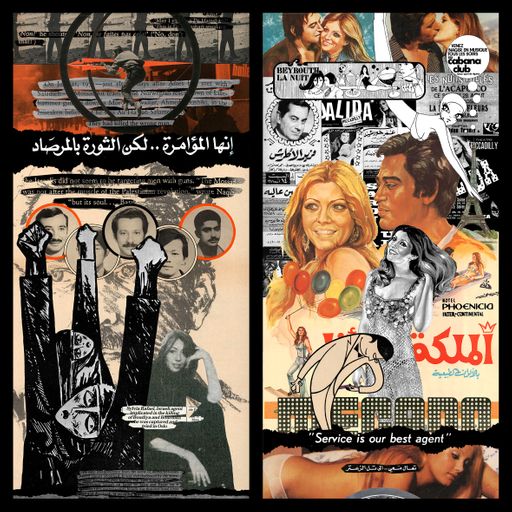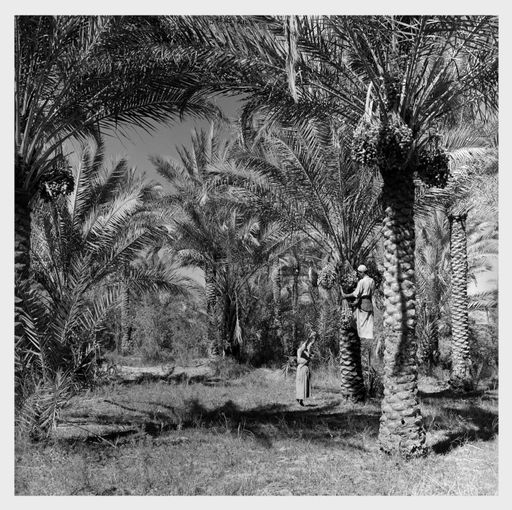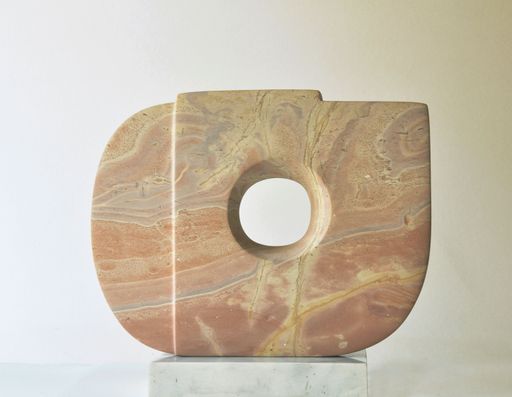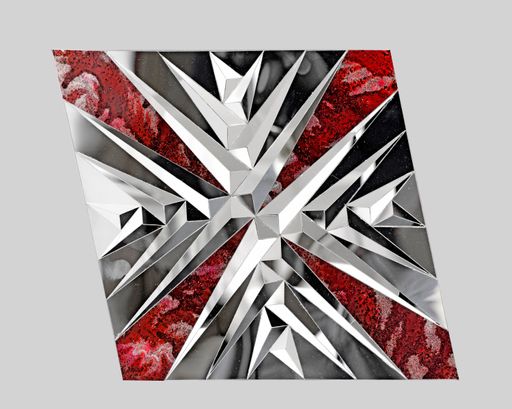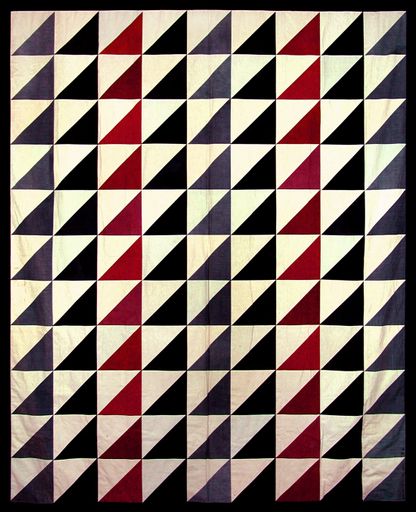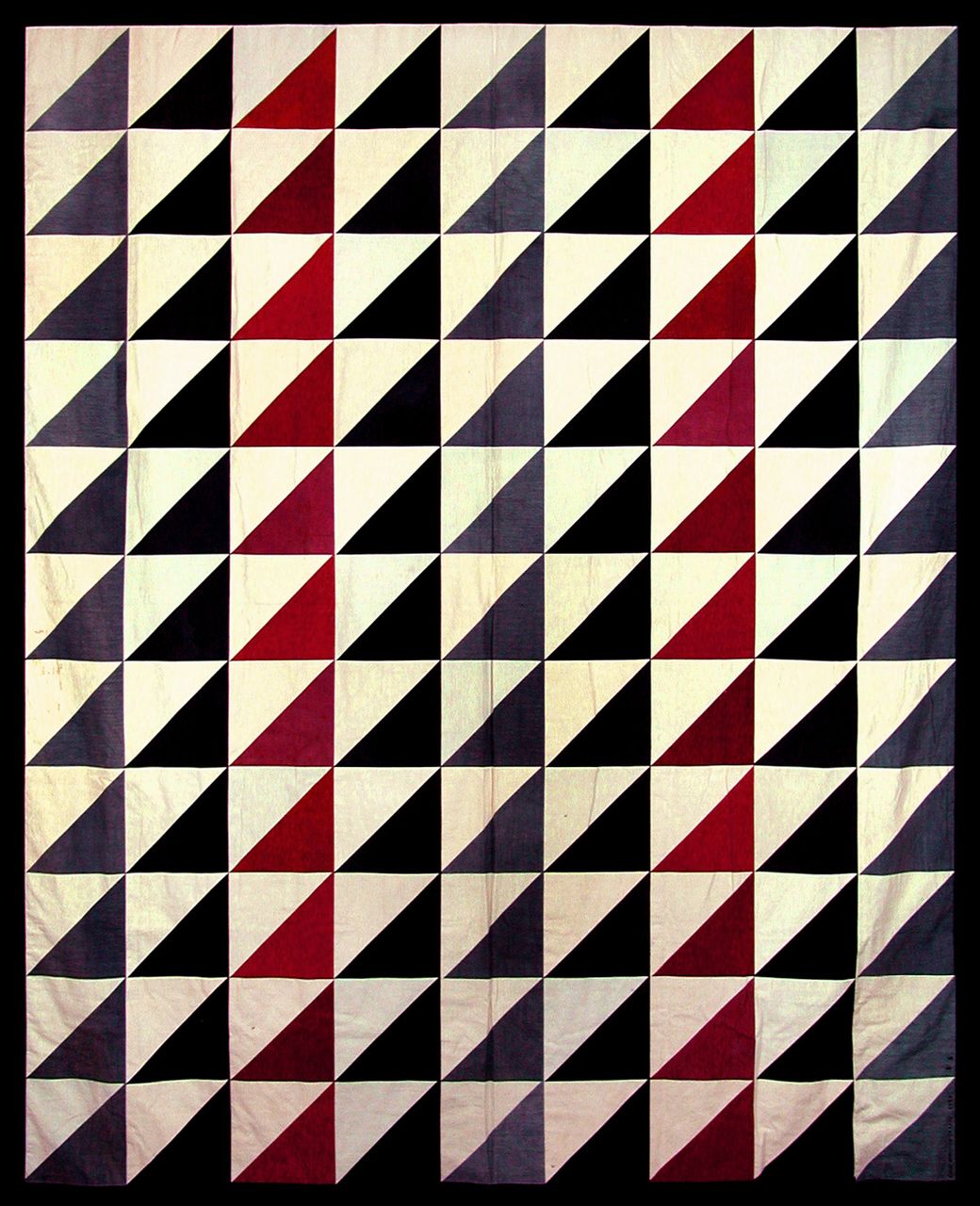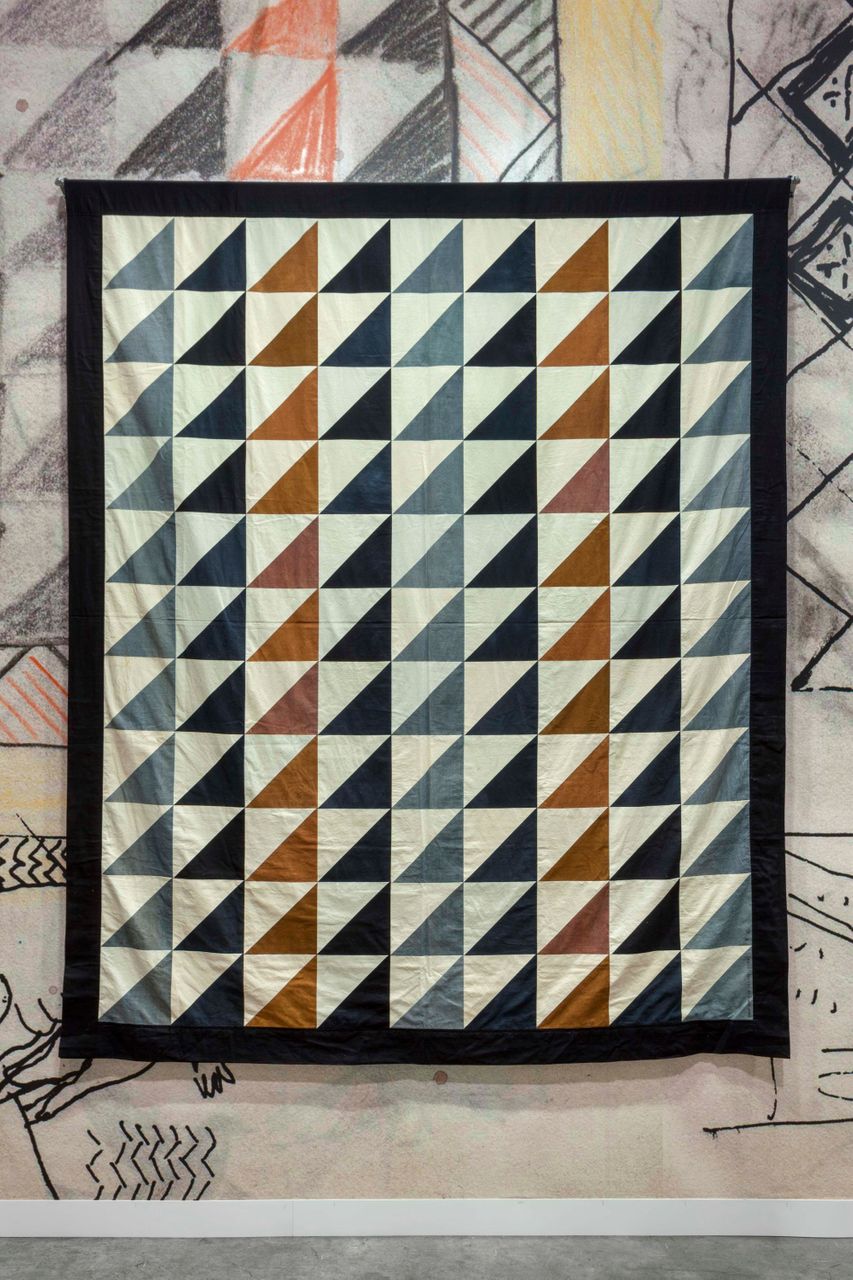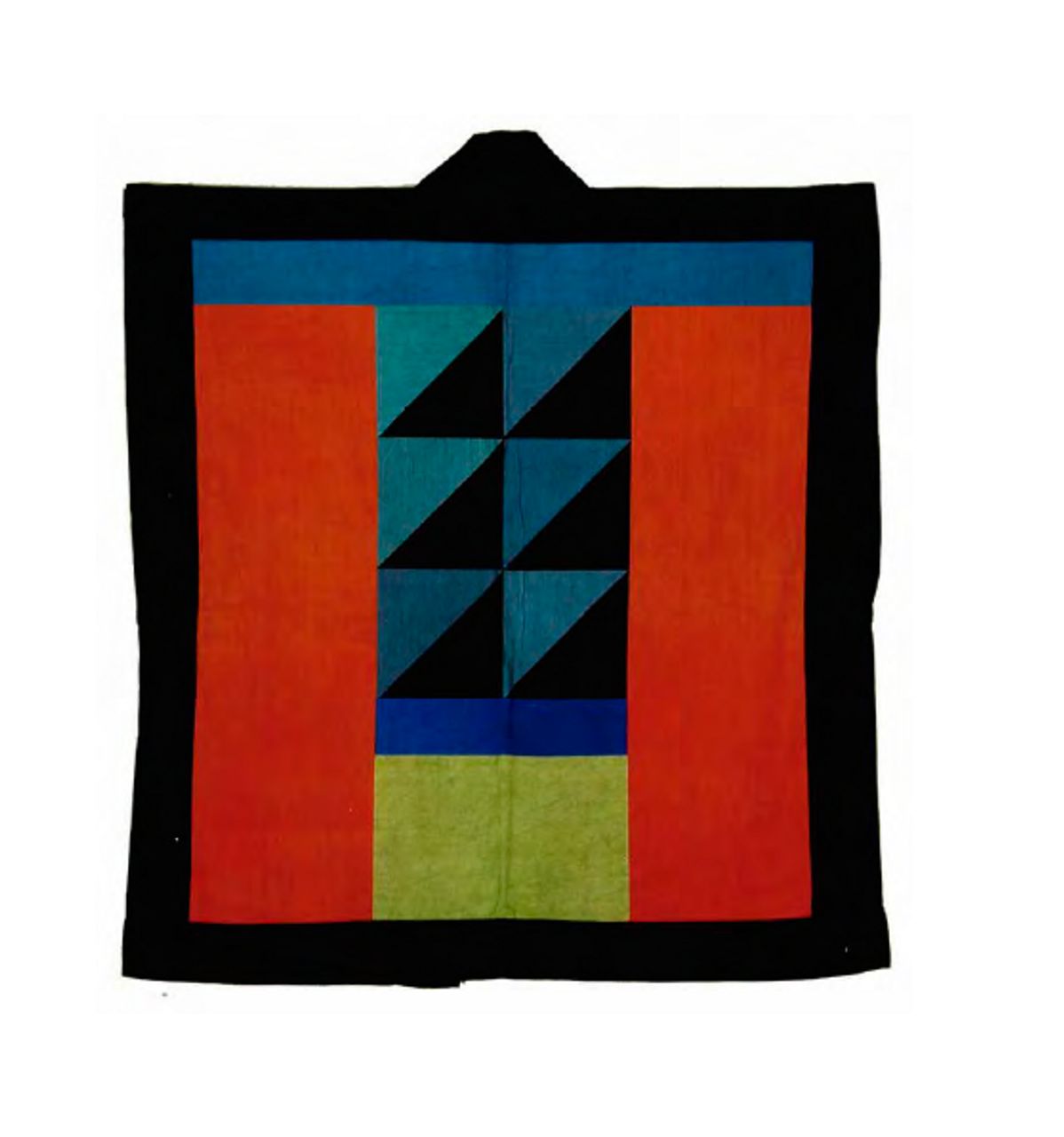-:-- / -:--
-:--
Chant Avedissian, 1951-2018
Pharaonic triangles, 1982
Hand dyed cotton
200.0 x 240.0 cm (78.7 x 94.5 in)
more
Constantly moving between the realms of what is considered 'high' and 'low' art, the Egyptian Armenian artists Chant Avedissian was acutely aware of the impact and legacy of Western colonialism, instead proposing an alternative modernity rooted in tradition. "Look East, everything is in Samarkand, in Bhukara, in Aleppo" he would say. Spending a decade working under the visionary Egyptian architect Hassan Fathy, otherwise known as 'The Architect of the poor' who advocated for the use of local materials and was responsible for the revival of mud building in the 40s. Fathy challenged Avedissian to reconsider local artistic traditions and to appreciate the properties of common materials. In the mid-80s, Avedissian assembled an iconic body of textiles works that recount one of the most renowned Egyptian art forms - the Khayamiya - appliquéd tents, that had a twofold purpose as both shelter and ornament and were easily disassembled, folded, and transported. In these works, the material used is Damour, a popular and inexpensive Egyptian cotton deliberately chosen as an ode to Fathy's celebration of the vernacular.
... read more
Constantly moving between the realms of what is considered 'high' and 'low' art, the Egyptian Armenian artists Chant Avedissian was acutely aware of the impact and legacy of Western colonialism, instead proposing an alternative modernity rooted in tradition. "Look East, everything is in Samarkand, in Bhukara, in Aleppo" he would say. Spending a decade working under the visionary Egyptian architect Hassan Fathy, otherwise known as 'The Architect of the poor' who advocated for the use of local materials and was responsible for the revival of mud building in the 40s. Fathy challenged Avedissian to reconsider local artistic traditions and to appreciate the properties of common materials. In the mid-80s, Avedissian assembled an iconic body of textiles works that recount one of the most renowned Egyptian art forms - the Khayamiya - appliquéd tents, that had a twofold purpose as both shelter and ornament and were easily disassembled, folded, and transported. In these works, the material used is Damour, a popular and inexpensive Egyptian cotton deliberately chosen as an ode to Fathy's celebration of the vernacular.
... read more
